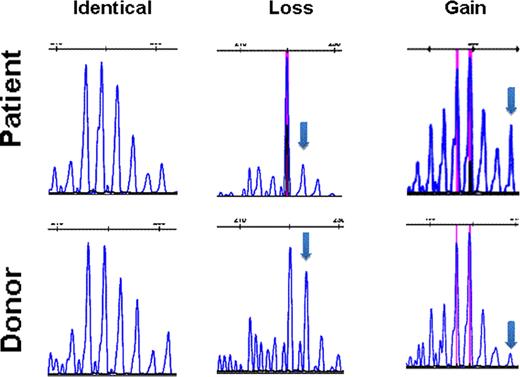Abstract
Abstract 831
After allogeneic stem cell transplantation (SCT), donor T lymphocyte immune function is slowly re-established in the recipient through reconstruction of the donor's post-thymic T cell repertoire and from T cell neogenesis in the thymus. Although long-term survivors from SCT appear healthy, their immune repertoire and differences from that of their donors have not been characterized. We studied 38 healthy patients surviving more than 10 years from a myeloablative SCT for hematological malignancy (median follow-up 12 years, range 10–16 years). T cell and natural killer (NK) cell repertoires in these patients were compared with cells from their stem cell donors cryopreserved at time of transplant and from the same donors at 10 year after SCT. The median age of both recipients and their sibling donors at time of transplant was identical (36 years). Patients received cyclosporine GVHD prophylaxis and delayed add-back of donor lymphocytes 30–90 days post transplant. Only one patient was on continued immunosuppressive treatment at the time of study. Compared with the donor pre-transplant counts there was no significant difference in the absolute lymphocyte, neutrophil, monocyte, CD4+ and CD8+ T cell, NK cell, and B cell subset counts. However, compared to their donors, recipients had a) significantly fewer naïve CD4+ and CD8+ T cells; b) lower T cell receptor excision circles levels; c) fewer CD4+ central memory T cells; d) more effector CD8+ T cells; e) and more FOXP3+ regulatory T cells. These data suggest that the patient had a persistent deficiency on T cell neogenesis. Molecular examination of the T cell receptor Vbeta (TCRBV) repertoire by spectratype analysis showed that there was no significant difference in total complexity score, defined as the sum of the number of discrete peaks for each Vbeta subfamily, between the patients and their donors. TCRBV subfamily spectratyping profiles of patients and donors, however, had diverged, with both gains and losses of peaks identifiable in both patient and donor. In conclusion, patients surviving 10 or more years after allogeneic SCT still show a T cell repertoire that reflects expansion of the donor-derived post thymic T cell compartment, with a limited contribution by new T cell generation and persistently increased Tregs. It therefore appears that a diverse TCRBV repertoire predominantly derived from the memory T cell pool is compatible with good health.
No relevant conflicts of interest to declare.
Author notes
Asterisk with author names denotes non-ASH members.


This feature is available to Subscribers Only
Sign In or Create an Account Close Modal